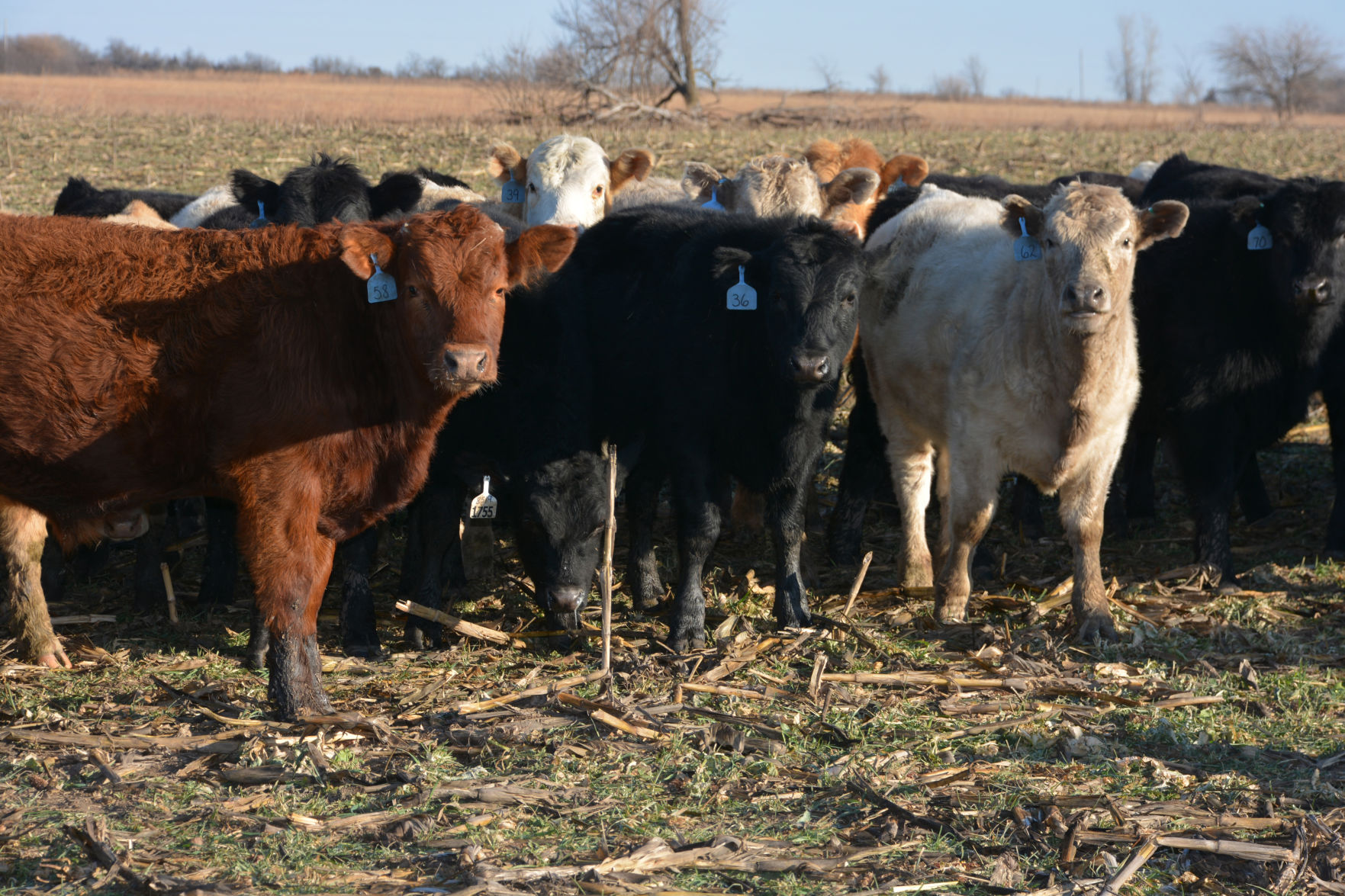Adding livestock into an annual cropping system and grazing cover crops that are planted between cash crops is one way to potentially increase profit to a farm enterprise. If done correctly it can also improve soil health.
The manure and urine left after the livestock graze a cover crop helps speed up the nutrient cycling because the forage has already been processed once. This waste also helps feed the soil microbes, which contribute to building stable soil aggregates. Better soil aggregation means more pores spaces in the soil which increases water infiltration and water holding capacity. As the microbes die they add organic matter to the soil which also increases water holding capacity and releases additional nutrients to subsequent crops.
Based on university research in western Kansas cover crop forage production is highly variable and dependent on the weather conditions from year to year. Dry matter amounts can range from over 3,000 pounds in favorable years to less than 1,500 pounds in unfavorable years. Because of this there needs to be a lot of flexibility in the grazing system and alternative forage sources need to be available if the cover crop field does not yield as expected or fails completely. To maintain adequate soil cover and provide a carbon food source for the soil microbes only about 25 to 40 percent of the total forage should be eaten by the livestock.
The cover crop seed mix should be tailored to the nutritional needs of the class of livestock grazing it. Most actively growing cover crops will provide enough crude protein to meet the animals’ needs, but other feed sources and supplements may have to be provided to meet other nutrient requirements. A forage sample should be collected and analyzed determine if anything else is needed in the diet. The analysis will also show if there are any potential toxicity issues, like high nitrate levels.
Other considerations would include having an adequate water source at or near the cover crop field for the livestock. The cost of hauling water for any distance at all can reduce potential profit margins significantly. Field location and how easy it is to access needs to be also be considered. If the field is a good distance away from the headquarters or doesn’t have any decent roads to get to it may not be feasible to graze. What type of fencing and how the field will be fenced also needs to be determined.
One question I often get is how much soil compaction is created by livestock grazing on the field. If managed correctly and if cattle are removed, or confined to a sacrifice area, when the soil is saturated the compaction should be minimal and only in the upper couple of inches of the soil. This is especially true on long term no-till fields that already have good soil structure. The freezing and thawing of the soil in the winter should mitigate the shallow compaction left by the livestock.
Grazing cover crops can be profitable and should something to consider. Especially if you already have the livestock, facilities and equipment already in place. But every producer, field and situation is different. All costs and potential income must be considered. Fortunately, there are several universities and others that have cover crop grazing budget templates posted on the web that can help you determine if grazing cover crops is right for you.




